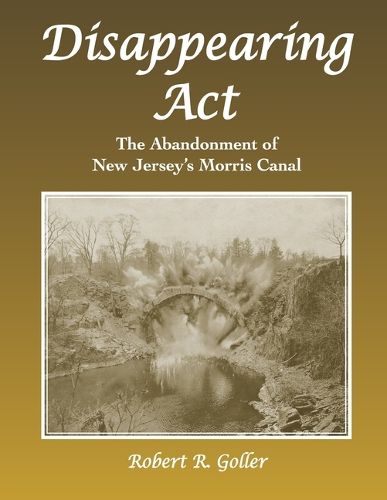Readings Newsletter
Become a Readings Member to make your shopping experience even easier.
Sign in or sign up for free!
You’re not far away from qualifying for FREE standard shipping within Australia
You’ve qualified for FREE standard shipping within Australia
The cart is loading…






Disappearing Act The Abandonment of New Jersey's Morris Canal The Morris Canal, the novel artificial waterway that "climbed mountains" by way of its ingenious inclined planes, had outlived its commercial usefulness long before the beginning of the 20th century. Its use as a carrier of Pennsylvania's anthracite coal and Jersey iron was taken over by railroads, which began to arrive even while the canal was being built. Obsolete after the Civil War, leased to the Lehigh Valley Railroad in perpetuity by 1871, passed on (with some exceptions) to the state of New Jersey by 1923, the Morris Canal was for the most part removed from the landscape during the years that followed. Remnants of its existence remained, though, and over succeeding decades others hunted for those remnants, interviewed people who had worked on or witnessed the canal when it was still there, and began to compile a new record of what had been. Those responsible for the abandonment in the 1920s had produced a detailed record of their work in reports, engineering drawings, and photographs. By the 1960s, books featuring the Morris Canal began to appear. This is the story of the Morris Canal's abandonment in the 1920s. Aside from historic photographs from the canal's lifetime, the preponderance of the records comes from the engineering firm then headed by Cornelius C. Vermeule, who had been New Jersey's state geologist for many years and an expert on the part that water supply played in New Jersey's landscape.
$9.00 standard shipping within Australia
FREE standard shipping within Australia for orders over $100.00
Express & International shipping calculated at checkout
Disappearing Act The Abandonment of New Jersey's Morris Canal The Morris Canal, the novel artificial waterway that "climbed mountains" by way of its ingenious inclined planes, had outlived its commercial usefulness long before the beginning of the 20th century. Its use as a carrier of Pennsylvania's anthracite coal and Jersey iron was taken over by railroads, which began to arrive even while the canal was being built. Obsolete after the Civil War, leased to the Lehigh Valley Railroad in perpetuity by 1871, passed on (with some exceptions) to the state of New Jersey by 1923, the Morris Canal was for the most part removed from the landscape during the years that followed. Remnants of its existence remained, though, and over succeeding decades others hunted for those remnants, interviewed people who had worked on or witnessed the canal when it was still there, and began to compile a new record of what had been. Those responsible for the abandonment in the 1920s had produced a detailed record of their work in reports, engineering drawings, and photographs. By the 1960s, books featuring the Morris Canal began to appear. This is the story of the Morris Canal's abandonment in the 1920s. Aside from historic photographs from the canal's lifetime, the preponderance of the records comes from the engineering firm then headed by Cornelius C. Vermeule, who had been New Jersey's state geologist for many years and an expert on the part that water supply played in New Jersey's landscape.